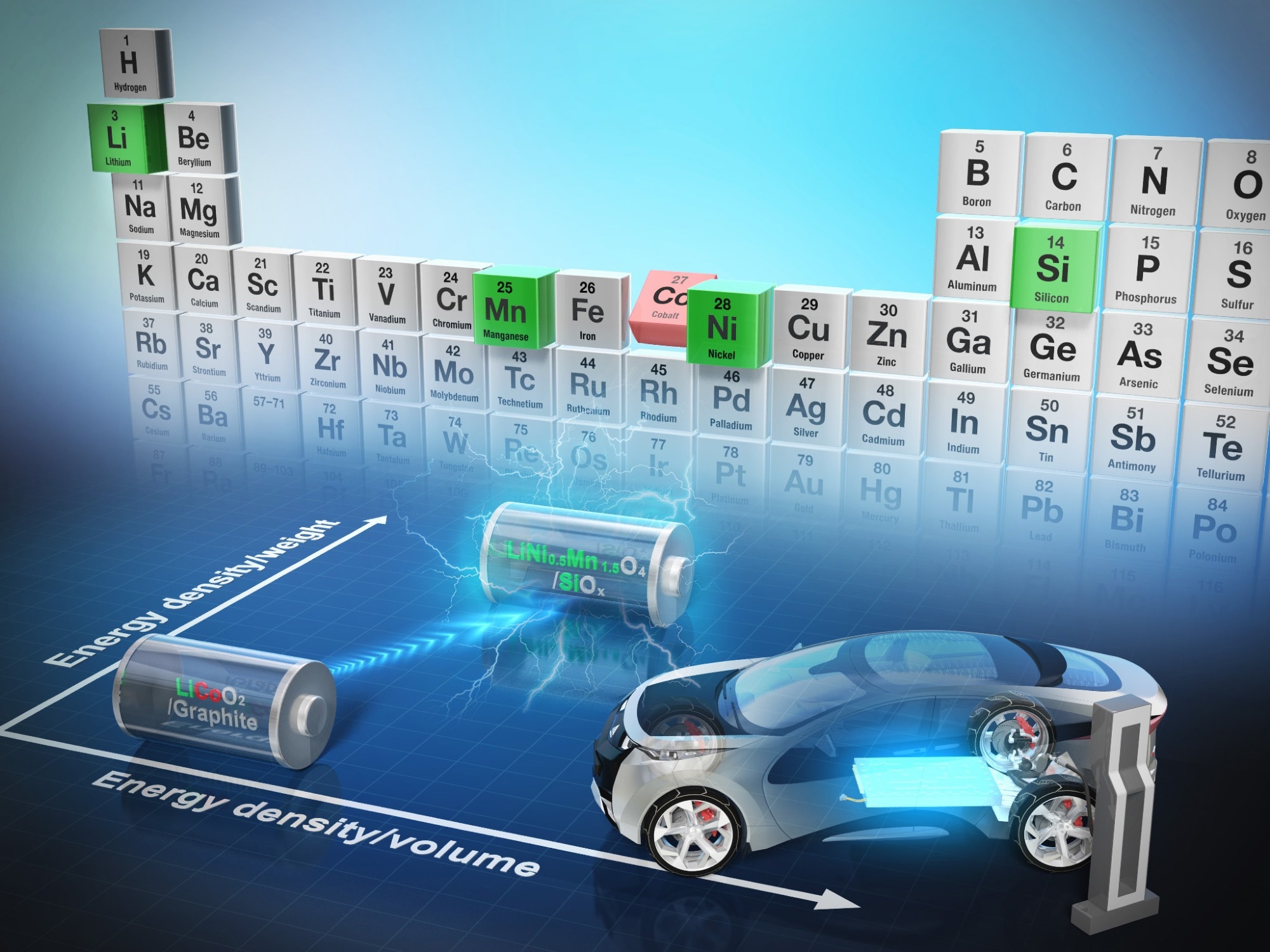High-capacity and dependable rechargeable batteries are indispensable components in various devices and transportation modes, and they are pivotal in the transition towards a more environmentally friendly world. Their production involves a diverse range of elements, including cobalt, which, unfortunately, contributes to certain environmental, economic, and social challenges.
 Charged and ready to go. By replacing problematic and scarce cobalt with safer and more abundant elements, the researchers mitigate some issues with current batteries. And as an extra bonus, the new battery chemistry leads to greater energy density for an equivalent weight and volume of battery, which could be very useful in applications such as electric cars. Image Credit: ©2023 Yamada et al. CC-BY-ND
Charged and ready to go. By replacing problematic and scarce cobalt with safer and more abundant elements, the researchers mitigate some issues with current batteries. And as an extra bonus, the new battery chemistry leads to greater energy density for an equivalent weight and volume of battery, which could be very useful in applications such as electric cars. Image Credit: ©2023 Yamada et al. CC-BY-ND
For the first time, a team, including researchers from the University of Tokyo, introduces a promising substitute for cobalt that, in certain aspects, demonstrates superior performance compared to state-of-the-art battery chemistry. This alternative also exhibits remarkable resilience through numerous recharge cycles, and the underlying principles can be extended to address other challenges.
Most gadgets contain a lithium-ion battery (LIB). For several decades, LIBs have served as the conventional means of powering portable or mobile electronic devices and machinery. As the world shifts away from fossil fuels, they are increasingly recognized as a crucial component for use in electric cars and home batteries, particularly for those equipped with solar panels. However, just like batteries have a positive and negative pole, LIBs have drawbacks alongside their advantages.
While they are among the most power-packed portable energy sources available, there's a widespread desire for LIBs to provide even greater energy density to prolong their lifespan or power more demanding devices.
Moreover, while they can endure numerous recharge cycles, they degrade over time, and it would be highly advantageous if batteries could withstand more recharge cycles while maintaining their capacity for extended periods. However, perhaps the most pressing concern with current LIBs relates to one of the elements used in their production.
Cobalt is extensively employed in a crucial component of LIBs, the electrodes. All batteries function on a similar principle: Two electrodes, one positive and one negative, facilitate the movement of lithium ions between them within the electrolyte when connected to an external circuit.
However, cobalt is a rare element, so rare that currently, there is only one primary source for it, a set of mines situated in the Democratic Republic of Congo.
Over the years, numerous concerns have arisen regarding the environmental impacts of these mines, along with the labor conditions, which include reports of child labor. From a supply standpoint, the source of cobalt presents challenges due to political and economic instability in the region.
There are many reasons we want to transition away from using cobalt in order to improve lithium-ion batteries. For us, the challenge is a technical one, but its impact could be environmental, economic, social and technological. We are pleased to report a new alternative to cobalt by using a novel combination of elements in the electrodes, including lithium, nickel, manganese, silicon, and oxygen—all far more common and less problematic elements to produce and work with.
Atsuo Yamada, Professor, Department of Chemical System Engineering, The University of Tokyo
The new electrodes and electrolyte developed by Yamada and his team not only eliminate cobalt but also represent an improvement over current battery chemistry in various ways. These new LIBs boast an approximately 60% higher energy density, potentially leading to longer lifespans, and they can provide 4.4 volts, as opposed to the typical 3.2–3.7 volts of conventional LIBs.
One of the most remarkable technological achievements lies in the enhanced recharge characteristics. Test batteries employing this new chemistry were capable of completing over 1,000 charge and discharge cycles (simulating three years of full use and charging), with only a 20% reduction in their storage capacity.
“We are delighted with the results so far, but getting here was not without its challenges. It was a struggle trying to suppress various undesirable reactions that were taking place in early versions of our new battery chemistries which could have drastically reduced the longevity of the batteries,” said Yamada.
And we still have some way to go, as there are lingering minor reactions to mitigate in order to improve the safety and longevity even further. At present, we are confident that this research will lead to improved batteries for many applications, but some, where extreme durability and lifespan are required, might not be satisfied just yet.
Atsuo Yamada, Professor, Department of Chemical System Engineering, The University of Tokyo
While Yamada and his team initially focused on applications in LIBs, the principles underlying their recent breakthrough can be extended to various other electrochemical processes and devices. This includes different types of batteries, water splitting for hydrogen and oxygen production, ore smelting, electro-coating, and numerous other applications.
Journal Reference:
Ko, S., et al. (2023). Electrolyte design for lithium-ion batteries with a cobalt-free cathode and silicon oxide anode. Nature Sustainability. doi.org/10.1038/s41893-023-01237-y.